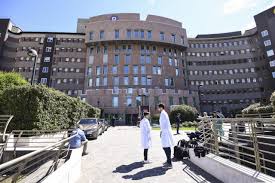Study says Italy has the ‘highest cancer survival rates in Europe’

Rome: More people survive certain types of cancer after treatment in Italy than in any other European country, according to a new EU report on Italian healthcare.
The survival rates for several types of cancer five years after diagnosis are higher in Italy than in the rest of the European Union on average, according to the latest State of Health in the EU profile of Italy, presented in Bari on Friday.
The five-year survival rate for prostate cancer is 90 percent, slightly higher than the EU average of 87%, the report said.
The rate for breast cancer is 86 percent, again three points higher than the European average.
For colon cancer, the rate is 64 percent – four points higher than the EU average – while the rate for lung cancer is 16 percent, compared to 15 percent across Europe.
“Five-year survival rates following diagnosis for these and other cancers were slightly higher in Italy than in other EU countries, suggesting the health system is generally able to provide effective and timely treatments,” the report’s authors wrote.
“Italy’s low levels of preventable deaths can be explained, at least in part, by solid public health policies implemented about a decade ago,” researchers wrote.
These policies included a nationwide smoking ban in public areas and workplaces (implemented in 2005), stricter rules on access to tobacco (2013), stricter drink driving regulations and raising the age limit for buying alcohol to 18 (in 2012.)
Researchers noted there had been a “remarkable reduction in alcohol consumption in recent decades … explained largely by various socio-demographic and economic factors.”
Life expectancy at birth in Italy reached 83.1 years in 2017, the second highest in the EU after Spain.
While the gender gap in life expectancy has narrowed since 2000, on average Italian men still live four years less than women.
There are also disparities by socioeconomic status and across regions, the report said.
The least-educated Italian men on average live 4.5 years less than the most educated, and people in the most affluent regions in the north live over three years more than those living in the least affluent regions in the south.
Health spending per capita in Italy was 2,483 euros annually in 2017, about 15 percent below the EU average of 2,884 euros.
Italy’s National Health Service (SSN) provides universal coverage, with about three-quarters of the cost covered by public funding and the remainder by citizens’ direct payments.





